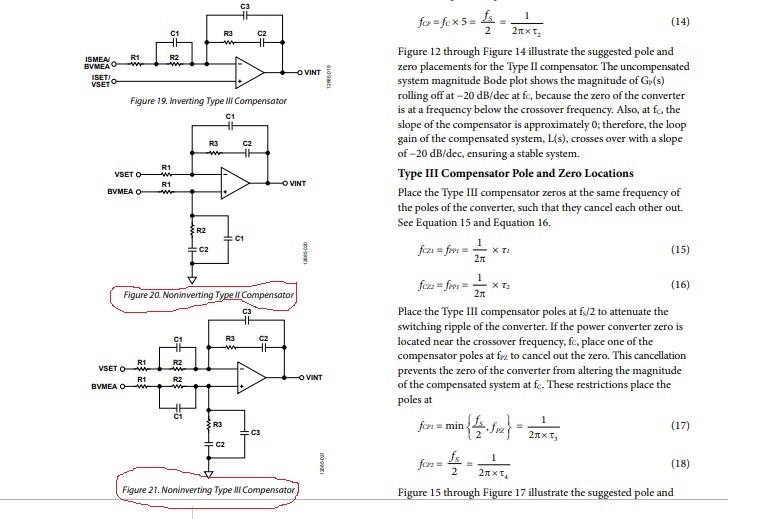Hi
I am familiar with inverting Type 2 and 3 compensators, I have stabilized many DC/DC converters (buck boost ...) with these types. I could derive and manipulate (Poles and Zeros) the transfer function of these compensators. These last days, I am faced with "Non-inverting type 2 and 3 compensators". The topology i found in some sites did nont convince me.
Please can anyone guide me to PDF file that deals in depth with this kind of compensators ??


